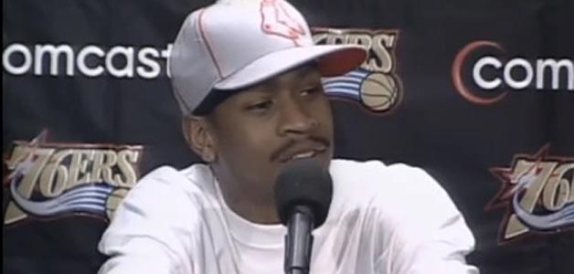Fletcher Cox has become quite the controversial figure since receiving the monster extension he earned last offseason. For the Eagles, however, he is worth every penny.
Getting to the quarterback is a priority in the NFL. Next to having a franchise QB, the most important aspect of the game is disrupting an opposing QB. If you can disrupt a backfield using only four rushers, you’re in an ideal spot. That’s the mentality of defensive coordinator Jim Schwartz, and the man that makes it realistic is Cox.
Wait, let’s back up.
Cox held out of team activities last spring in hopes that it’d force the team’s hand. Well, it did. The Eagles signed Cox to an extension worth over $100 million. When you see the figures typed out, as a fan, you shutter. You might think, “How could you pay a defensive tackle what a quarterback makes?”
After overhauling the staff, the Eagles hired Jim Schwartz to run the defense. Schwartz is an aggressive-minded head coach who preaches pass rush. His concepts aren’t tricky, like that of another Jim who coached in Philly, but they’re effective with the right personnel. Howie Roseman and company had to focus their attention in various areas last season, mainly at quarterback, and simply couldn’t work maintenance at every position. Several 4-3 misfits stayed; Connor Barwin, Bennie Logan, Marcus Smith. A lack of production seemed evident, and the heralded defensive line was again coming up short.
Fast forward to 2017.
The front office laid out their blueprint and they attacked the 2nd installment of the team’s refacing. With the departures of Barwin and Logan came the acquisitions of Chris Long, Derek Barnett and Tim Jernigan — two defensive ends and one defensive tackle that fit the 4-3 defense far better than their antecedents.
Schwartz is ready to unleash the horses from the stable. This past week, OTAs started and the team is starting to take shape. Reports have indicated that Jernigan and Barnett are making strong cases for big roles on this defensive front, while underachiever Vinny Curry seeks improvement a year after he was given his pricey extension. The player missing from OTAs, for the second year now, is Fletcher Cox.
Do fans have the right to question his leadership? His mentality? Sure. The 26-year old is on a family vacation while his teammates are working hard to get back into the swing of football. But the fans should also understand that this is common practice in the NFL. It is a voluntary session, and the implication that he is not a leader because he did not show up is mostly an assumption. Leadership is not given to you during OTAs. It isn’t something taken away from you while you’re on vacation. It isn’t a tangible item passed around the locker room. Leadership is earned and displayed over years and years.
Fletcher Cox was drafted 12th overall in 2012 and he turned just 26 last December. He’s been an Eagle his entire career, through three coaching regimes, and garnered a Pro Bowl bid for the second consecutive year in 2016. He isn’t even in his prime yet and he’s already recognized as one of the best interior defensive linemen in the NFL. You think that the young, inexperienced defensive players aren’t looking up to that guy? Because of a few practice sessions?

There is also outcry because it appeared that Cox had a “subpar season” after the pay day, and instead of getting back into the NovaCare Complex, he chose a tropical getaway. The lazy way to analyze the season he had is by pointing to his low sack total, but you can’t get the full feel for what Cox does unless you go deeper.
Um. This is awkward…
In 2016, Cox laid the foundation for Schwartz. Did he light the stat sheet on fire? Not necessarily. Did he have a “down year”, as many have stated? Not necessarily.
Schwartz, as previously stated, loves to rely on just four rushers. Without Cox drawing doubles, it’d be fairly easy for five offensive linemen to block four rushers, right? Here are a few screenshots where Cox won’t show up on the stat sheet, but he’ll damn sure catch a defensive coordinator’s eye in film study.

Here is Cox against the Green Bay Packers. That dark line indicates the line of scrimmage. The Packers assigned one blocker to Cox, and he bullies him back five yards to force running back James Starks to bounce outside into the awaiting arms of his teammates. This isn’t a “pass rush” play, but shows the impact Cox has disrupting an opposing team’s backfield.

Before QB Matt Stafford could even look, he was running for cover as Cox swiftly blew by his blocker and got into the backfield. Stafford ducked Cox, but was eaten alive by a swarm of rushers. No stat for Cox, but he made it all happen by disposing of the guard assigned to block him one-on-one.
Now I didn’t want to make this a big “film room” article, but I definitely felt the need to share a few examples of impact that doesn’t show up on the box score. Cox did this all year long, but without the sacks it goes forgotten.
After his 9.5-sack season in 2015, his sack total dipped to 6.5. Could that be because defensive coordinators are finally understanding that Cox is worth the attention? It’s definitely something worth debating, but I’d bet that the decrease there isn’t because Cox is getting worse. At 26, he’s starting to come into his own. Each year, he’ll grow more comfortable with his coaches and teammates. He’ll develop more familiarity with the scheme. He’ll continue earn his leadership and he’ll continue to grow as a person.
One thing, if nothing else, is for certain. He’ll draw more doubles in 2017, and that will create endless opportunities for the hungry bunch of new faces looking to prove that leaving them one-on-one could also be a mistake.
